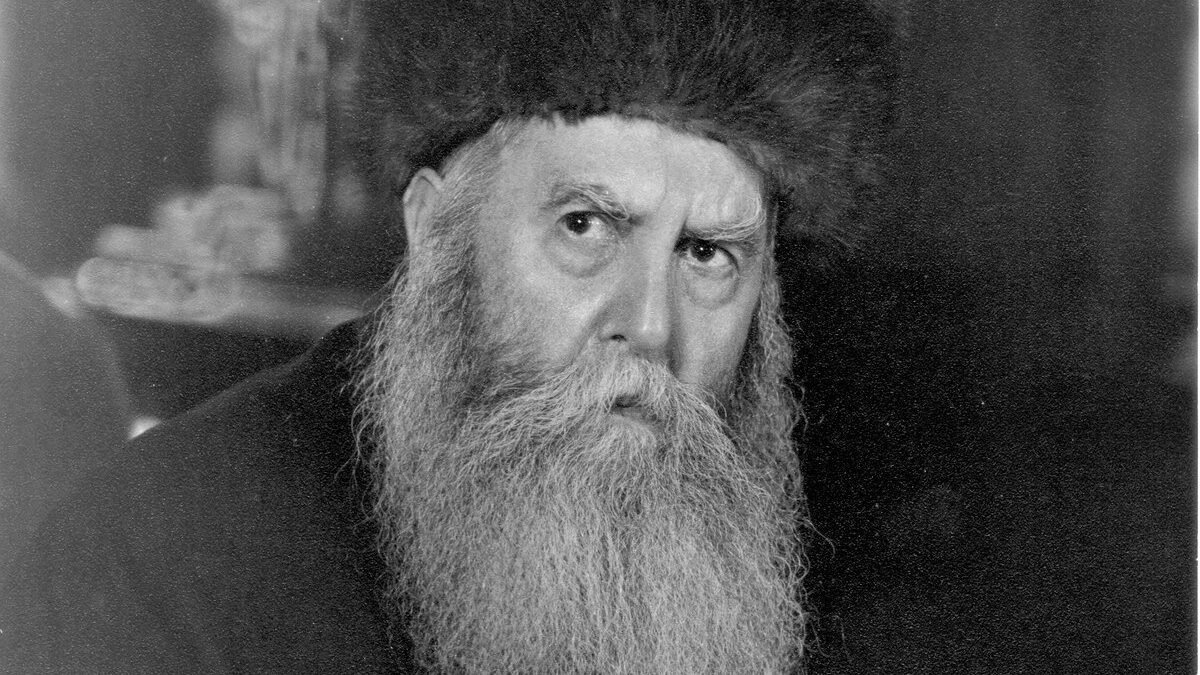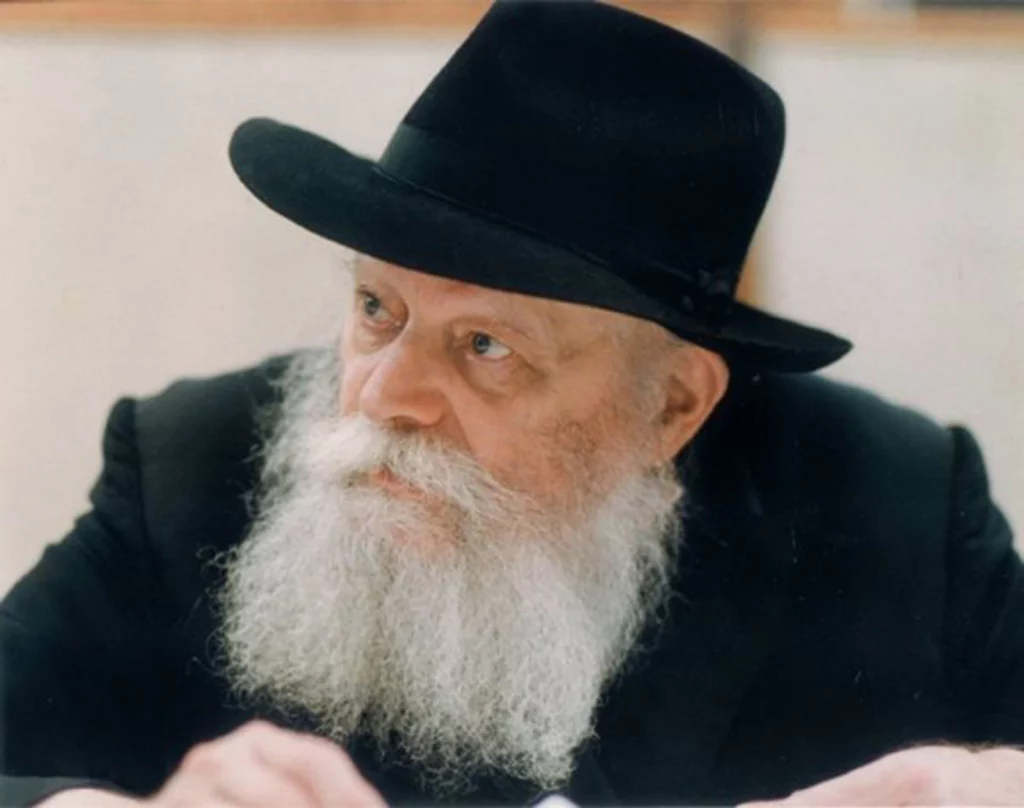I remember it well. It was early Sunday morning June 12th 1994, (corresponding to the 3rd of Tammuz 5754) when we heard the news that all Chassidim dreaded hearing; our beloved and revered Rebbe and teacher had returned his soul to its Maker.
I was brought up in a home that acknowledged the Rebbe, as indeed my father and grandfather prayed in the Chabad shul, but it was only just before my bar mitzvah, when the first Chabad emissaries arrived in South Africa, that I began to understand what a unique giant the Rebbe was, and what a privilege it would be for me to one day, to become part of his vision to make this world a better and more G-dly place.

Rabbi Yosef Yitzchak Schneersohn
After the passing of his father-in-law, Rabbi Yosef Yitzchak Schneersohn (pictured above), in 1950, the Rebbe, reluctantly ascended to the leadership of the Lubavitch movement. Soon Lubavitch institutions and activities took on new dimensions. The outreaching philosophy of Chabad-Lubavitch was translated into ever greater action, as Lubavitch centres and Chabad Houses were opened in dozens of cities and university campuses around the world.
I arrived, together with my wife Penina and three of our children, in January 1987, having received encouragement and a blessing from the Rebbe.
The Rebbe keenly understood that our every action is part of a bigger picture. Every good deed we do brings humanity closer to the ultimate goal, the era of cosmic perfection and universal awareness of G‑d, known in Judaism as the time of Moshiach. The Rebbe spoke tirelessly about this time, demonstrating how the world is heading closer and closer to this special era and how every person can actualize it by increasing in acts of goodness and kindness.

What is it about his leadership that was — and, in so many ways, still is — so unique?
The Rebbe recognized the need of the moment (Post Holocaust) and responded with courage and direction. He radiated a keen sense of urgency, and he demanded much from his followers, and even more from himself. The Rebbe led, above else, by example.
He was a rare blend of prophetic visionary and pragmatic leader, synthesizing deep insight into the present needs of the Jewish people with a breadth of vision for its future. In a sense, he charted the course of Jewish history — initiating, in addition to reacting to, current events. Time and again, what was clear to him at the outset became obvious to other leaders with hindsight, decades later.
He would not acknowledge division or separation. Every Jew — indeed every human being — has a unique role to play in the greater scheme of things and is an integral part of the tapestry of G‑d’s creation.
For nearly five of the most critical decades in recent history, the Rebbe’s goal to reach out to every corner of the world with love and concern has unfolded dramatically. No sector of the community has been excluded — young and old, men and women, leader and layman, secular and Chareidi.
One of my favourite descriptions of who the Rebbe is, was one given be the late Chief Rabbi Sacks:
Good leaders wish to cultivate followers, but that great leaders, such as the Rebbe, aim to cultivate leaders.
The late Chief Rabbi, Jonathan Sacks.
His extraordinary insight perceived the wealth of potential in each person and his inspiration, now accessible through his writings and videos, boosts the individual’s self-perception, ignites their awareness of that hidden wealth and motivates a desire to fulfil his or her potential. In the same way, many a community has been transformed by the Rebbe’s message and been given — directly or indirectly — a new sense of purpose and confidence. In each case the same strong, if subtle, message is imparted: “You are Divinely gifted with enormous strength and energy — actualize it!”
Yehuda Avner, the famous Israeli ambassador once wrote about a late night private audience that he had with the Rebbe:
“Now, I shall never know whether it was only because I was tired that I had the temerity to say what I really felt or whether I would have said it anyway, but I heard myself saying to the Rebbe, “I have within my own family those who see in the Rebbe powers that the Rebbe does not recognize in himself.”
The Rebbe’s brows knitted, and his deep blue eyes greyed into sadness. Softly, he said, “Yesh k’nireh anoshim hazekukim l’kobayim — There are evidently people who need crutches.”
A long and pregnant pause followed. Perhaps his secret threads of perception and communication were tracking my thoughts, for what he said next answered my unspoken question.
Raising his palm in a gesture of reassurance, and with an encouraging smile, he said, “Let me tell you what I try to do. Imagine you’re looking at a candle. What you are really seeing is a mere lump of wax with a thread down its middle. So when do the thread and wax become a candle? Or, in other words, when do they fulfil the purpose for which they were made? When you put a flame to the thread, then the candle becomes a candle. The wax is the body, and the wick the soul. Ignite the soul with the fire of Torah and a person will then fulfil the purpose for which he or she was created. And that is what I try to do – to ignite the soul of our people with the fire of Torah.”
A buzzer had been sounding periodically, indicating that others were awaiting their audience. So I rose and took my leave, pausing at the door to ask, “My candle – has the Rebbe lit it?”
“No,” he said, clasping my hand. “I have given you the match. Only you can light your candle.”
This year the Rebbe’s Yahrzeit of the 3rd Tammuz, corresponding to 22nd June 2023.
You are invited to an evening of personal recollection and inspiration on Thursday 22nd June from 20:15 onwards at Chabad House, 15 The Upper Drive, Hove, BN3 6GR.
Please RSVP by clicking below or call/text Rabbi Efune on 07885 538681.


